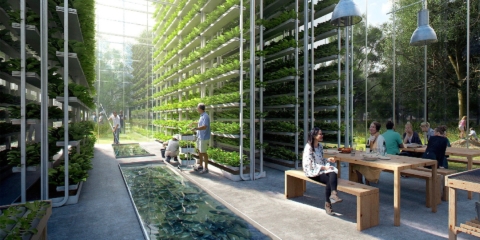Would you like to get notifications from Christian?
What happened?
It wasn’t so long ago that 3D printing was the new kid on the block. Now the term 4D printing is making headlines, stretching our ability to conceptualize once again. To understand 4D printing, it helps to have a better familiarity with 3D printing. It's basically 3D printing on steroids. Things that are printed using this technology can change shape and function based on the environment they are in. This technology allows printers to create objects that can change shape and function over time. 4D printing has already been used to create a number of amazing products, including self-assembling furniture and clothes that can adapt to the weather. With this technology, the possibilities are endless!
Read the entire article: https://bit.ly/3uV0XzK
Why is this important?
4D printing is the next step in 3D printing, and it offers a wide range of benefits for businesses and consumers alike. Here are some of the top benefits of 4D printing:
1. Reduced manufacturing time and costs - 4D printing can drastically reduce manufacturing times and costs, since many parts can be printed simultaneously.
2. Increased design flexibility - With 4D printing, you have greater design flexibility than with traditional manufacturing methods. You can create shapes and structures that wouldn't be possible with other methods.
3. Improved functionality - Fourth-dimensional objects have improved functionality over 3D objects because they can change shape or function depending on the circumstances. For example, a medical implant could change size or shape once it
Christian is a futurist and trendwatcher who speaks about the impact of exponential technologies like AI on organizations, people, and talents. Christian tailors his presentations to your audience's specific industries and needs.



Our world is changing at an exponential rate! A big tidal wave of digital transformation and disruption is coming at us fast. Many organizations see this wave as a threat and experience stress, but there are also organizations that just see this wave as an opportunity.

Imagine sitting with just 10-15 fellow executives at a premier location, gaining clarity on the impact of AI on your industry while enjoying an exquisite dining experience. These are not just meetings—they are transformative moments that will shape the future of your organization



In the future, 3D printing and generative design will allow for products to be designed in a more decentralized manner, and production will take place closer to the customer and fully on-demand. 3D printing technology will also allow for more customization and personalization of products.


The agricultural industry is ripe for disruption. Robotics, AI, and IoT are all technologies that have the potential to radically transform the way we grow food. In combination with vertical farming, these technologies could increase the efficiency and quality of agricultural products.

A human-centered society is one that puts people first and where technology is used to unite and empower people. It is a society that values biological life and dignity above all else. It is a society that recognizes the importance of human relationships and works to strengthen them. In a human-centered society, all members of the community are valued and treated with respect.


The future of healthcare is here. New technologies like AI, IoT, big data, and smart sensors make it possible to become the CEO of your own health. Imagine that your phone can listen to your voice and AI algorithms can detect small nuances in the tone of your voice that indicate specific diseases.
